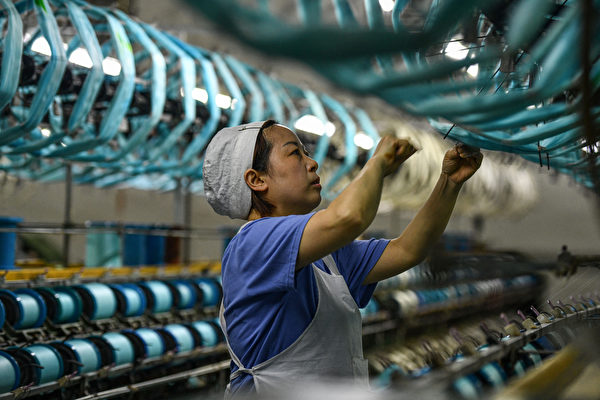On Tuesday, official data revealed that the growth rate of China’s manufacturing and service sector activities in April slowed down. The cooling economic activities indicate unstable demand, posing challenges for the Beijing authorities.
According to the data released by the National Bureau of Statistics of China, the Purchasing Managers’ Index (PMI) for China’s manufacturing sector dropped from 50.8 in March to 50.4 in April, although still above the 50-point mark, indicating fragile overall economic momentum.
The data shows that the new orders index was 51.1, significantly decreasing by 1.9 percentage points from the previous month. The employment index was 48.0, a 0.1 percentage point decline from the previous month, indicating a continued contraction in manufacturing employment.
In April, the sub-index for the service sector in the non-manufacturing industry was only 50.3, the slowest growth since January, and a decrease of 2.1 from March’s 52.4.
Furthermore, business activity indices for industries such as catering, capital market services, real estate, etc., were also below the critical point of 50, indicating contraction.
Analysts state that the Chinese authorities must introduce more stimulus measures to support the economy, and they are awaiting clues from the monthly political meeting of the Politburo.
As the Federal Reserve and other developed economies are not keen on interest rate cuts, China may have to endure a longer period of weak external demand. Additionally, with accusations of overcapacity by the West, Beijing may face more trade barriers.
Experts suggest that Beijing’s current priorities lie in addressing the prolonged downturn in the real estate sector and the expansion of local government debt, which have undermined the confidence of households and investors, impacting the economic outlook.
To prop up the real estate sector, authorities have announced several rounds of support measures, yet none have resulted in a substantial revival of the Chinese economy.
Krishna Srinivasan, the IMF’s Asia-Pacific Director, stated on Tuesday that China should streamline industrial policies to reduce improper resource allocation and overcapacity.
Even though the first-quarter economic growth exceeded expectations, crucial areas such as retail sales, industrial profits, and real estate investment remained subdued in March, raising concerns among investors about China’s ability to achieve a comprehensive demand recovery.
The Chinese government has set the GDP growth target for 2024 at around 5.0%, with many analysts believing this goal may be overly ambitious.
Julian Evans-Pritchard, a macroeconomic analyst at Capital Economics, mentioned that the current cyclical recovery can continue in the short term, largely due to fiscal support. However, he also warned of significant downside risks, including threats of foreign trade barriers, a sharp decline in real estate construction, and a reduction in infrastructure spending outside local government budgets.
(This article references related reports by Reuters)

